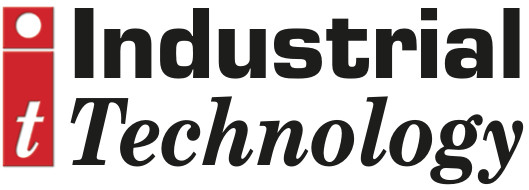
Posted to News on 19th Oct 2023, 10:04
How automation is transforming machine performance and reliability

Advanced digital tools are changing the service game for machine builders and end-users. The experts at Lenze explain how.
For industrial companies, Overall Equipment Effectiveness (OEE), matters. One of the most used key performance indicators, OEE combines three critical aspects of machine performance into a single percentage. Calculating it is as simple as multiplying three numbers:
- Availability: The fraction of scheduled time that the operation is available to operate.
- Performance: The speed at which the operation runs as a fraction of its designed speed.
- Quality: The number of good units produced as a fraction of the total units started.
Improving OEE is far more challenging, and an organisation’s approach to maintenance is a key element of that challenge. In the simplest approach, reactive maintenance, companies act when reliability problems begin to affect one or more elements of OEE. That might be a breakdown, which compromises availability by forcing operations to an unscheduled stop. Or it could be subtler problems that slow machines down or push defect rates up, compromising performance and quality respectively.
The problems with this approach are obvious. Unscheduled stoppages, underperforming machines and quality problems are expensive and undesirable. Allowing machines to operate in a poor state can affect the safety and environmental sustainability of operations.
That’s why most organisations take a more proactive approach, with a programme of planned preventative maintenance actions. Through actives such as lubrication, calibration, or the scheduled replacement of key components, they aim to avoid breakdowns and keep machines running efficiently.
Prevention might be better than cure, but planned maintenance activities bring their own costs. Maintenance teams need time to complete their work, for example. That can eat into availability, especially for machines that operate 24/7. Replacing components to a fixed schedule can mean that parts are retired with plenty of useful life left. That means more costs for owners, and more resources consumed over the life of the machine. And, because people make mistakes, every maintenance intervention is an opportunity to introduce new problems.
To address the limitations of conventional preventative maintenance, companies can try a smarter approach. Condition-based maintenance uses data from sensors fitted to the machine to pick the perfect moment for maintenance interventions. Tell-tale signs such as higher operating temperatures, unusual vibration or contaminated lubricants can indicate that components are reaching the end of their useful life. That allows parts to be repaired or replaced before they fail.
A further refinement of the condition-based approach combines machine data with advanced algorithms. Predictive maintenance aims to give operators actionable information on their machines, such as the likely time to failure for key components or the likely root-cause of emerging problems. That makes it easier to schedule maintenance interventions at the most convenient time, and helps teams complete the work more efficiently.
Prediction for everyone
The potential of condition-based and predictive maintenance techniques has been known for decades, but these approaches have traditionally been expensive and difficult to implement. Equipping machines with the necessary sensors added to their cost. Analysing the data from those sensors required specialist expertise. Developing robust predictive models was even harder, calling for advanced analytics capabilities and significant computing power. As a result, predictive maintenance has long been confined to a relatively small number of applications in high-value, mission-critical machines.
That’s starting to change. Thanks to technological advances in sensors, network communications, computing power and analytical capabilities, predictive maintenance is now entering a much wider range of industrial applications.
These technologies go by various names: Industry 4.0, the industrial internet of things (IIoT), the 4th Industrial Revolution. Whatever the name, the value proposition is the same: smarter, better-connected machines and rich data that gives users and machine builders the power to transform the flexibility, reliability, and performance of their equipment.
In its early days, IIoT was a development-intensive activity. The core building blocks of the approach were designed to be easy to assemble, thanks to common communications protocols and data exchange standards, but users and machine builders still had to put the pieces together themselves.
Today, however, leading industrial automation players have developed integrated platforms that do the hard work for you. Let’s look at one state-of-the-art example: Lenze’s X4 Remote platform.
Bringing machines to the cloud
As a leading supplier of industrial automation solutions, Lenze is fully committed to the digital revolution in machine building. The company has been working in this area for more than three quarters of a century.
Lenze always believed that advanced technology works best when it is integrated into the heart of a machine. For example, in 1977 Lenze introduced inverters for the control of three phase motors, an innovation that transformed flexibility and energy efficiency in a wide range of industrial applications. By 1996, the company was offering drives with integrated control functionality, allowing our inverters to control complex industrial processes. And Lenze been developing dedicated software and digital solutions for machine builders and engineers since the turn of the millennium.
Lenze’s X4 Remote is designed give machine builders a simple, safe, and reliable way of establishing connections to their machines. An integrated, ready-to-use solution, X4 Remote takes care of the hard work, allowing OEMs to spend more time creating and delivering services that offer real value to their customers.
Machine data is the foundation of digital services. That data may come from many different sources. Some predictive maintenance techniques rely on dedicated sensors installed for purpose, but OEMS can also extract extra value from data that already exists within their machines. Motor controllers, for example, record speed, voltage, and current data as part of their normal operations. Viewed through the right analytical lens, that data can provide useful insights into the health of the motor and connected components. Unexpected peaks or instabilities in current, for example, could indicate problems in a motor. Higher power consumption at the same speed could be a sign of excessive friction elsewhere in the machine.
However, before they can analyse machine data to gain those insights, companies need to access it. That requires a secure and reliable data connection. Lenze’s x500 range of Gateway devices is designed to take care of that. These compact, self-contained units provide a bridge between the machine’s internal control networks and the X4 Remote platform. They can use wired, wireless, or cellular data connections, and include robust access and encryption technologies to maintain security.
The core of the X4 Remote system is a global network of computer servers. Storing and processing machine data in the cloud offers numerous benefits for machine builders and end users alike. There’s no need to buy, manage and update expensive on-site IT infrastructure, for example. Users only need to pay for the storage and processing power they need. Scaling is easy as those needs change. And critical data is available anywhere, anytime for authorised users.
X4 Remote makes data access easy too. The platform provides a range of user-configurable apps, hosted in the cloud and usable on any device that can run web-browsing software. Users can monitor their machines in real time, review historical data, or receive instant alerts when pre-defined parameters are exceeded. In-built application programming interfaces (APIs) and data export tools allow X4 Remote to communicate with third party software such as business intelligence (BI) platforms or enterprise resource planning (ERP) systems.
For data analysis and visualisation, X4 Remote’s Studio App is a quick and easy to use editor that creates concise dashboards and widgets. End users or machine builders can use the App to create at-a-glance perspectives on overall machine performance, or to drill deep into their data for diagnostics or performance improvement initiatives.
X4 Remote for maintenance and beyond
X4 remote gives OEMs the tools they need to build condition-based and predictive maintenance capabilities into their machines. They can create machine health dashboards and set up early-warning alerts. They can offer advanced support services to their customers, including remote diagnostics and remote software upgrades.
Those capabilities can give machines a useful edge in competitive markets. They can also unlock new revenue streams for OEMs. Those might include condition monitoring as a service, condition-based maintenance and support contracts, or machine performance guarantees.
Some machine builders are even using the power of remote monitoring and connectivity to underpin entirely new business models. That could include machine rentals, ‘as a service’ or models where end-users pay for operating hours or machine output.






